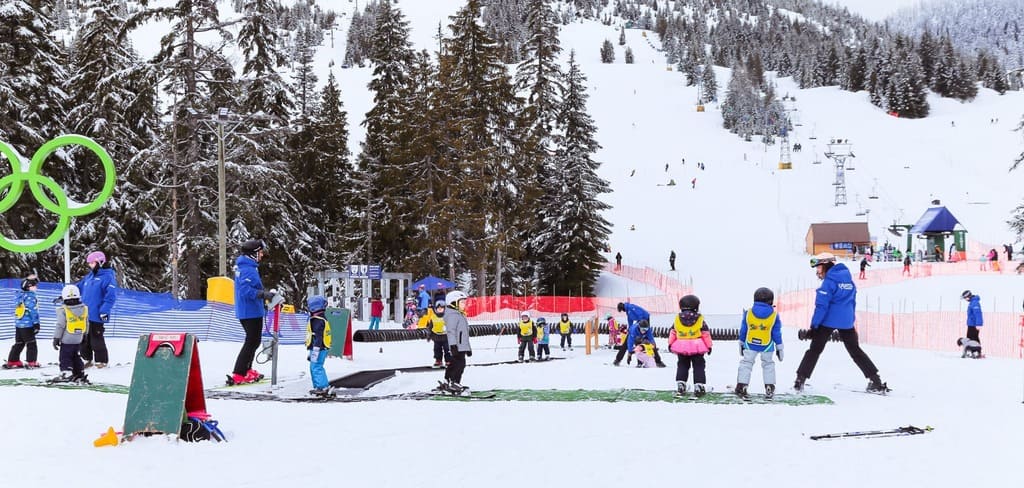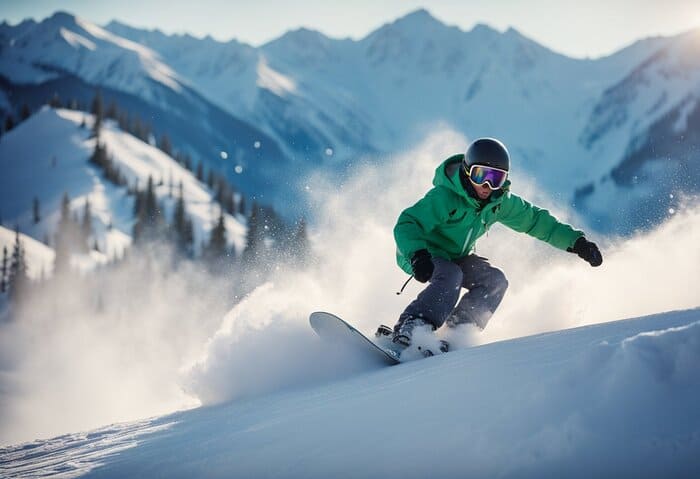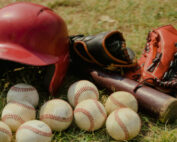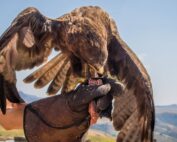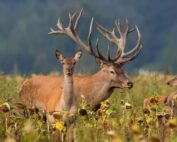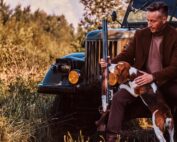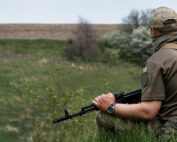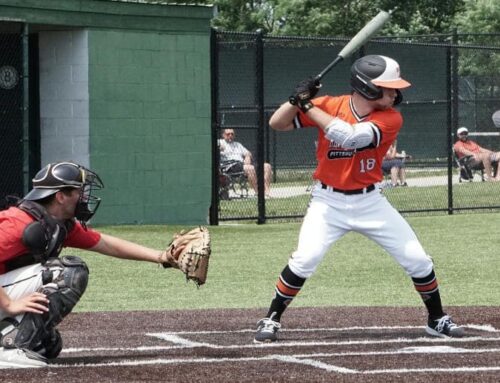Snowboarding for Kids: Tips and Tricks for a Safe and Fun Ride
Snowboarding is a fun and exciting winter sport that can be enjoyed by people of all ages. Many parents are interested in introducing their children to snowboarding but may be unsure of how to get started. Fortunately, there are many resources available to help parents teach their kids how to snowboard safely and effectively. In this section, we will explore some key considerations to ensure a safe and enjoyable experience for your child on the slopes.
Children’s age, strength, and ability to cooperate
The age of your child is an important factor to consider when deciding if they are ready for snowboarding lessons. Most resorts begin ski school at age 4, but it’s important to note that some resorts may not teach snowboarding to children until they are at least 7 years old. This is because snowboarding requires a certain level of strength and coordination that younger children may not have developed yet.
In addition to age, your child’s physical strength and ability to cooperate are also important considerations. Snowboarding requires balance, agility, and the ability to follow instructions. It’s important to assess your child’s physical abilities and their willingness to listen and cooperate with instructors before enrolling them in snowboarding lessons.
Dressing for Success: Keeping Warm and Dry
One of the most important aspects of snowboarding is dressing appropriately to stay warm and dry. Snowboarders have unique apparel requirements, and it’s crucial to ensure that kids are well-equipped for their snowboarding adventures. Here are some essential items to consider when dressing your child for snowboarding:
Jacket:
A snowboard jacket is roomier than a traditional ski jacket, allowing for a full range of motion. Look for jackets with articulated arms and longer hip-length designs to keep your child warm and dry.
Pants:
Choose snowboarding pants with extra waterproofing and padding on the bottom and knees. These pants should fit more loosely than ski pants and have features like articulated knees and boot gaiters for added comfort and protection.
Base Layers:
Invest in synthetic or merino wool base layers to keep your child warm and dry. Midweight models are ideal, providing insulation without being too restrictive.
Insulating Layer:
On colder days, layer a lightweight fleece or wool top and pants over the base layers. Avoid cotton as it retains moisture. Alternatively, double up on long underwear, with one size larger than the other, for added warmth and flexibility.
Neck Gaiter:
Don’t overlook the importance of a neck gaiter for protecting your child’s neck, ears, and lower face from wind and sunburn. Opt for merino wool or polyester fleece for warmth and comfort.
Socks:
Choose snowboard socks that extend just above the calf and are made of a blend of wool and synthetic fibers. Rotate between two pairs to prevent blisters and keep an extra pair in your pack for wet feet emergencies.
Goggles:
Select medium-tint goggles suitable for all conditions. Look for goggles designed to fit comfortably with a helmet to avoid the dreaded “gaper gap.”
Gloves and Mittens:
Invest in well-insulated, waterproof, and breathable gloves or mittens. Mittens tend to be warmer, while gloves offer more dexterity. Consider options with built-in wrist protectors for added safety.
Remember to pack hand and foot warmers to provide additional warmth and comfort on the slopes.
Rent or Buy: Choosing the Right Snowboard Gear
When it comes to snowboard gear, you have the option to rent or buy, depending on your needs and frequency of snowboarding. Here are some factors to consider:
- Rental: Renting gear is a convenient option, especially if you’re just starting or snowboarding infrequently. Many resorts and rental shops offer season-long lease packages that include board, boots, and a helmet. Leasing allows you to exchange equipment as your child grows or gains more experience.
- Buying: If you plan to snowboard regularly or prefer owning your gear, buying is a viable option. Ensure that you choose the right size board, boots, and bindings for your child’s comfort and safety. Quality gear can make a significant difference in your child’s progression and enjoyment.
Shopping for Snowboard Gear: The Essentials
When shopping for snowboard gear, it’s essential to prioritize comfort, safety, and performance. Here are the key items to consider:
Selecting a Snowboard
Choosing the right snowboard is essential for a child’s success on the slopes. Parents should consider the child’s weight, height, and skill level when selecting a snowboard. A snowboard that is too long or too short can make it difficult for the child to maneuver and control their movements. A general rule of thumb is to choose a snowboard that comes up to the child’s chin or shoulder height.
Parents should also consider the shape of the snowboard. There are several shapes available, including directional, twin, and directional twin. Directional snowboards are designed to be ridden in one direction, while twin snowboards are symmetrical and can be ridden in either direction. Directional twin snowboards are a combination of both.
Helmet
Parents should choose a helmet that fits properly and has a hard outer shell and a soft, cushioned inner liner. Helmets with built-in goggles are also a popular choice.
Boots
Invest in warm and well-fitting boots. Soft boots with rip-and-stick straps provide flexibility and support for your child’s feet. Ensure that the boots have the right amount of space for turning ability and comfort.
Bindings
Choose adjustable bindings that can accommodate several shoe sizes. Quality bindings can last for several years, providing stability and ease of use. Make sure the bindings fit snugly with your child’s boots and are easy to release and attach.
Wrist Guards
Wrist sprains are common in snowboarding. Consider snowboarding gloves with built-in wrist guards or purchase wrist protectors separately. These guards provide support and protect your child’s wrists during falls.
By investing in proper gear, you set your child up for a safe and enjoyable snowboarding experience.
Understanding Snowboarding Techniques
Getting started with snowboarding requires patience and a focus on safety. Here are some essential tips to help your child get the most out of their snowboarding journey:
Take a Lesson:
Enroll your child in snowboarding lessons to learn skills and safety from a qualified instructor. Lessons provide a structured approach and allow kids to learn from someone other than their parents. Consider group lessons for social interaction and private lessons for personalized guidance.
Keep it Fun:
Make snowboarding a fun experience for your child. Take breaks, pack snacks, and play games like Follow the Leader. Offer rewards for good turns or extra runs to motivate your child.
Choose Appropriate Terrain:
Start your child on suitable terrain that matches their skill level. Begin with easy slopes where they can build confidence and technique. Gradually progress to more challenging terrain as their skills improve.
Determine Stance:
Help your child determine their snowboarding stance, whether regular (left foot forward) or goofy (right foot forward). To determine which stance is best, have the child stand with their feet together and then push them gently from behind. Whichever foot they step forward with first will be their front foot on the snowboard.
Balance:
is key to snowboarding. Kids need to learn to distribute their weight evenly across their board, maintaining stability as they move downhill. Practice standing on the board with both feet strapped in and shifting weight from side to side.
Set Up Bindings:
Set up bindings in a stance slightly wider than shoulder-width, centered on the board, or slightly setback toward the tail. Angle the front foot slightly toward the tip and keep the back foot straight or slightly pointed toward the tail.
Practice On-Snow Directions:
Help your child understand on-snow directions by practicing putting on and taking off the board. Familiarize them with the different parts of the board, such as the tip, tail, toe, and heel edges.
Safety First:
Teach your child to always look uphill before launching down a slope and to be aware of other skiers and riders. Emphasize the importance of sitting on the side of the run, away from the middle, to avoid collisions.
Ride with a Partner:
Encourage your child to ride with a buddy for added safety and fun. Teach them the buddy system and the importance of sticking together, especially in areas with trees or deep snow.
Skating Technique:
Teach your child the proper technique for skating on flat sections. Have them push from behind the board with their back foot, alternating with short glides. Consider using a stomp pad for better control and foot positioning.
Gear Check:
Before hitting the slopes, double-check your child’s gear, including boot laces, bindings, and helmet straps. Ensure everything is secure and properly adjusted to prevent accidents.
Fall Technique:
Teach your child proper falling techniques to minimize injuries. Please encourage them to ball their hands into fists and punch the snow with a straight wrist to absorb impact and prevent wrist sprains.
Soft Snow Landings:
Choose days with softer snow conditions for learning sessions. Soft snow provides cushioning and reduces the risk of injuries, particularly to the tailbone.
Remember, patience and encouragement go a long way in helping your child develop their snowboarding skills and passion for the sport.
Snowboarding Etiquette
When introducing kids to snowboarding, it’s important to teach them about proper snowboarding etiquette. This includes respecting others, being safe on the slopes, and taking care of the environment.
Respect for Others
Respect for others is an essential part of snowboarding etiquette. It’s important to be aware of other riders on the slopes and to give them plenty of space. When passing other riders, make sure to do so safely and with plenty of room to spare. Always yield to slower riders and those below you on the slope.
Safety on Slopes
Safety is a top priority when snowboarding with kids. Make sure your child is wearing a properly fitting helmet and other protective gear. Teach them about safe falling techniques and how to get back up on their board safely. Always obey posted signs and stay within your ability level. Never ski or snowboard under the influence of drugs or alcohol.
Taking Care of the Environment
Snowboarding is a fun and exciting sport, but it’s important to take care of the environment while enjoying it. Teach kids about Leave No Trace principles, such as packing out all trash and not disturbing wildlife. Encourage them to stay on designated trails and avoid cutting switchbacks. By taking care of the environment, we can ensure that future generations can enjoy snowboarding just as much as we do.
Remember, snowboarding etiquette is about mindfulness and respect. By following these guidelines, we can all enjoy the slopes safely and responsibly.
Skiing vs. snowboarding for young children
It’s a tough choice! Both skiing and snowboarding have their merits for young children. Skiing tends to be more stable and might be easier for very young beginners due to its natural stance. It can also provide a smoother learning curve, allowing children to progress at their own pace. On the other hand, some kids may find snowboarding more exciting and may adapt well to its challenges. Here are some items to consider:
- Age and Physical Development: Younger children, especially those under the age of 5 or 6, may find it easier to start with skiing due to the more stable and natural stance it offers. Skiing can be a good choice for very young beginners.
- Interest and Motivation: It’s crucial to consider your child’s interests and desires. Some kids may have a preference for one sport over the other. If your child is excited about either skiing or snowboarding, they are more likely to enjoy the learning process.
- Motor Skills: Assess your child’s motor skills and coordination. Skiing might be a better choice if your child is still developing their balance and coordination. Snowboarding demands more refined balance and can be challenging for some children, but others may adapt well to it.
- Instructor Guidance: Seek advice from ski or snowboard instructors at your local resort. They can assess your child’s abilities and provide recommendations based on their experience.
- Safety: While both sports have safety measures in place, skiing does have a reputation for being somewhat safer, especially for young children. The wider stance and separate leg motion in skiing can help reduce the risk of certain types of falls.
- Family Considerations: If other family members already participate in one of the sports, it might be more convenient to introduce your child to the same sport, as they can learn together.
- Progression: Skiing may offer a smoother learning curve for young children. It’s easier for them to learn the basics of stopping and turning, and they can progress at their own pace.
Ultimately, the key is to provide your child with a positive and enjoyable introduction to snow sports. Whether it’s skiing or snowboarding, both can be incredibly fun and rewarding activities. It’s important to be patient and supportive, and let your child’s interests and abilities guide the choice. In some cases, children might even choose to switch from skiing to snowboarding or vice versa as they get older and more experienced.
Snowboarding is a fun and exciting sport that kids can enjoy. However, it is important for them to receive proper instruction to ensure their safety and success on the slopes. Here are some important things to consider when looking for snowboarding lessons for kids.
Finding a Good Instructor
A good instructor is key to a child’s success in learning to snowboard. Look for an instructor who is experienced and certified by a reputable organization, such as the Professional Ski Instructors of America (PSIA) or the American Association of Snowboard Instructors (AASI). It is also important to find an instructor who is patient, encouraging, and has a teaching style that is compatible with your child’s learning style.
Benefits of Group Lessons
Group lessons can be a great option for kids learning to snowboard. They provide an opportunity for kids to learn from each other and make new friends. Group lessons are also typically less expensive than private lessons. In addition, group lessons can provide a more social and fun atmosphere for kids, making the learning experience more enjoyable.
Progress Tracking
It is important for kids to be able to track their progress as they learn to snowboard. This can help them stay motivated and see how far they have come. Look for an instructor or program that provides regular feedback and progress reports. This can include things like video analysis, goal setting, and skill assessments.
Overall, finding the right snowboarding lessons for kids can make all the difference in their success and enjoyment of the sport. By finding a good instructor, considering group lessons, and tracking progress, kids can have a safe and fun experience on the slopes.
Preventing Injuries
Snowboarding is a fun and exciting winter sport for kids, but it can also be dangerous if proper precautions are not taken. Here are some tips to help prevent injuries while snowboarding.
Warming Up and Cooling Down
It is important for kids to properly warm up before hitting the slopes. This can include light stretching exercises to get the muscles warmed up and ready for the physical demands of snowboarding. After snowboarding, it is also important for kids to properly cool down to prevent muscle soreness and stiffness. This can include light stretching exercises and cool down activities such as walking.
Hydration and Nutrition
Proper hydration and nutrition are essential for kids to maintain their energy levels and prevent fatigue while snowboarding. It is important for kids to drink plenty of water before, during, and after snowboarding to stay hydrated. Additionally, kids should eat a balanced diet that includes carbohydrates, protein, and healthy fats to provide the energy and nutrients needed for snowboarding.
Importance of Rest
Rest is crucial for kids to prevent injuries while snowboarding. It is important for kids to take breaks and rest when they feel tired or fatigued. Additionally, kids should get plenty of sleep the night before snowboarding to ensure they are well-rested and alert on the slopes.
By following these tips, kids can stay safe and prevent injuries while enjoying the fun and excitement of snowboarding.
Frequently Asked Questions
What is the best age for kids to start snowboarding?
The best age for kids to start snowboarding is between 4 and 7 years old. At this age, kids have developed enough balance and coordination to learn the basics of snowboarding. However, every child is different, and some may be ready to start earlier or later. It’s important to consider your child’s physical abilities and readiness before starting.
How can I teach my child to snowboard?
Teaching your child to snowboard can be challenging, but there are some tips that can help. First, start by teaching your child the basics, such as how to stand on the board, how to balance, and how to turn. It’s also important to make sure your child is wearing the right gear, including a helmet and appropriate clothing. Consider taking a lesson from a professional instructor to help your child learn in a safe and effective way.
What are some good snowboarding lessons for kids?
There are many snowboarding lessons available for kids, including group lessons and private lessons. Group lessons are a great way for kids to learn with other children of similar age and skill level, while private lessons can provide more individualized attention. Look for lessons that are taught by certified instructors and that focus on safety and fun.
What size snowboard should I get for my 5-year-old?
The size of the snowboard you should get for your 5-year-old depends on their height and weight. Generally, a snowboard that is between 80 and 100 centimeters in length is appropriate for a child who is between 3 and 5 feet tall and weighs between 30 and 60 pounds. It’s important to choose a snowboard that is the right size for your child to ensure they can control the board and learn safely.
How can I speed up my child’s learning curve to ride off-piste?
Focus on making snowboarding fun and enjoyable for your child. Start with low expectations and gradually increase the difficulty of the terrain as they become more comfortable and confident. Remember, the goal is for them to have fun and develop a love for snowboarding.
RECENT POSTS
History of Baseball
History of Baseball: From Its Origins to Modern TimesBaseball is one of the most popular sports in the United States, with millions of fans tuning in to watch games each year. The sport has a [...]
Hunting Falconry
History of Hunting Falconry: An Overview of Falconry's Evolution and Significance Are you interested in learning about the ancient practice of hunting with trained birds of prey? Falconry has been practiced for thousands of [...]
Hunting Destinations in 2024
Hunting Destinations in 2024: Top Picks for Avid Hunters Are you looking for exciting hunting destinations to explore in 2024? Whether you're a seasoned hunter or just starting, there are plenty of options available [...]
History of hunting dogs
Explore the History and Significance of Hunting Dogs: A Comprehensive Guide If you're a hunting enthusiast, then you know the importance of having a reliable hunting dog by your side. Hunting dogs have been [...]
Hunting as a Hobby
Hunting as a Hobby: An Overview Hunting is a popular outdoor activity enjoyed by millions of people worldwide. While some hunt for food, others do it as a hobby. Hunting as a hobby can [...]

